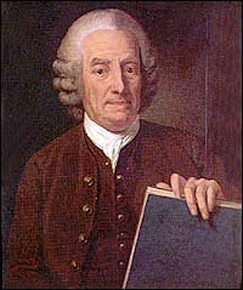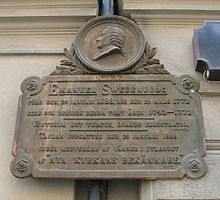 Who is Swedenborg?
Who is Swedenborg?
Emanuel Swedenborg, best known as a Christian theologian, also had a distinguished career in science, philosophy, and public service. A member of Swedish nobility, he served as a politician and made pioneering contributions to anatomy and physiology. Though he never founded a church, Swedenborg aimed to inspire deeper Christian practice within existing traditions. Over his lifetime, he published 18 theological works central to Swedenborgian thought.
Swedenborg’s Childhood, Education and Early Career
Swedenborg was born on January 29, 1688, the third of nine children. His father, Jesper Swedberg, was a prominent Lutheran bishop and professor of theology. Swedenborg grew up in an intellectually rich environment that fostered his early curiosity and dedication to learning.
After completing his studies at the University of Uppsala, Swedenborg traveled Europe, advancing his knowledge in diverse fields such as physics, anatomy, and mineralogy. For 50 years, he served in the Swedish House of Nobles and as the king's engineering advisor, gaining renown as a scientist and an early pioneer in understanding the cerebral cortex's role in the nervous system.
Despite his expansive scientific exploration, Swedenborg wasn't satisfied with a purely physical approach in his quest to understand the universe. In particular, he wanted to unravel the nature of the soul. Based on his conviction that all matter in the universe is fueled by God's creative life force, he shifted his focus to writing about the relationship between physical and spiritual life.
Swedenborg’s Spiritual Awakening, Visions & Writings
While undertaking a systematic study of the Bible, Swedenborg began experiencing vivid dreams and visions, which he came to recognize as divine revelations. In 1745, he reported that his 'spiritual eyes' were opened, enabling him to converse with God, angels, and spirits. He believed he was called to share insights about creation, the afterlife, and humanity’s spiritual purpose.
From this day on, Swedenborg was able to intermittently visit the spiritual world, including heaven and hell. He began writing in detail about his experiences and conversations with spirits, especially with regard to his discoveries about the spiritual meaning of the Word, and ultimately published 18 theological works.
He began publishing anonymously in England but added his name in later editions and publications. Gradually, due in part to the spread of stories about Swedenborg’s demonstrable ability to know about events that he was not present for, his work received attention and became publicly notable. He continued writing and participating in civic life until his death on March 29, 1772.
Swedenborg’s Legacy
Swedenborg’s works have influenced poets, philosophers, and social reformers, shaping modern thought in spirituality, literature, and psychology. His ideas often resonate in contemporary discussions, sometimes without direct attribution. Rather than abandoning science, Swedenborg’s theological writings reflect his belief that the natural world mirrors spiritual realities.
It was only after his death that groups formed for the purpose of studying Swedenborg’s Writings as a foundation for a religious life. His legacy primarily endures in the tradition of Swedenborgian Christianity, which values his unique vision of a universe where physical and spiritual realities are profoundly intertwined. Those who participate worship according to Swedenborg’s theology because they find greater ability to live lives of love and service through the Writings’ exploration of a deeper sense of the Ten Commandments.
More comprehensive accounts of Swedenborg’s life can be found on NewChurchBooks.com.




